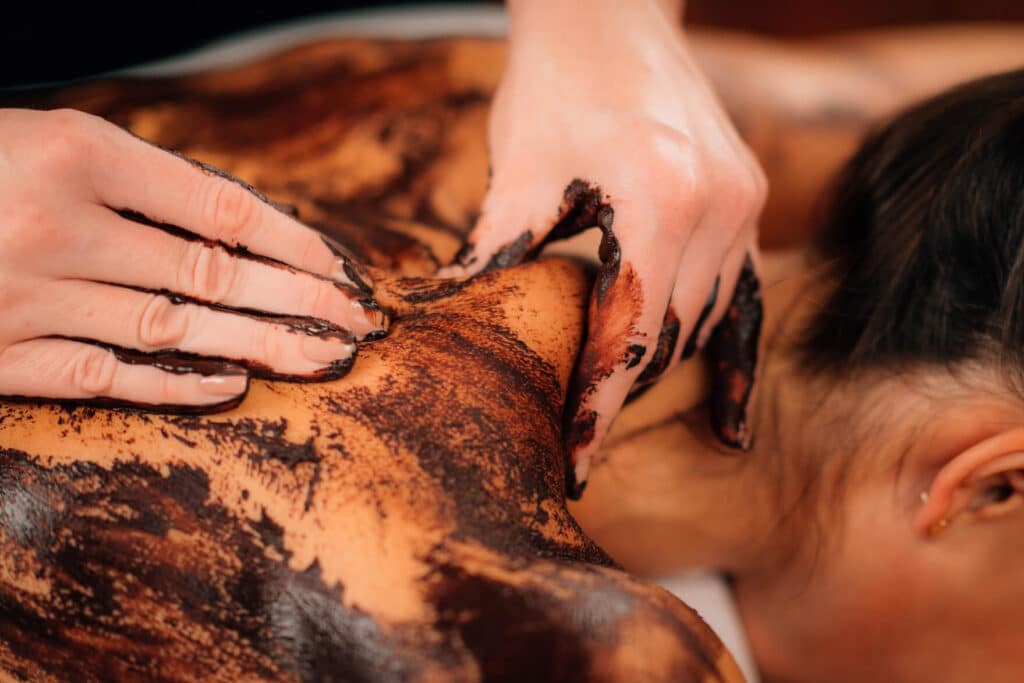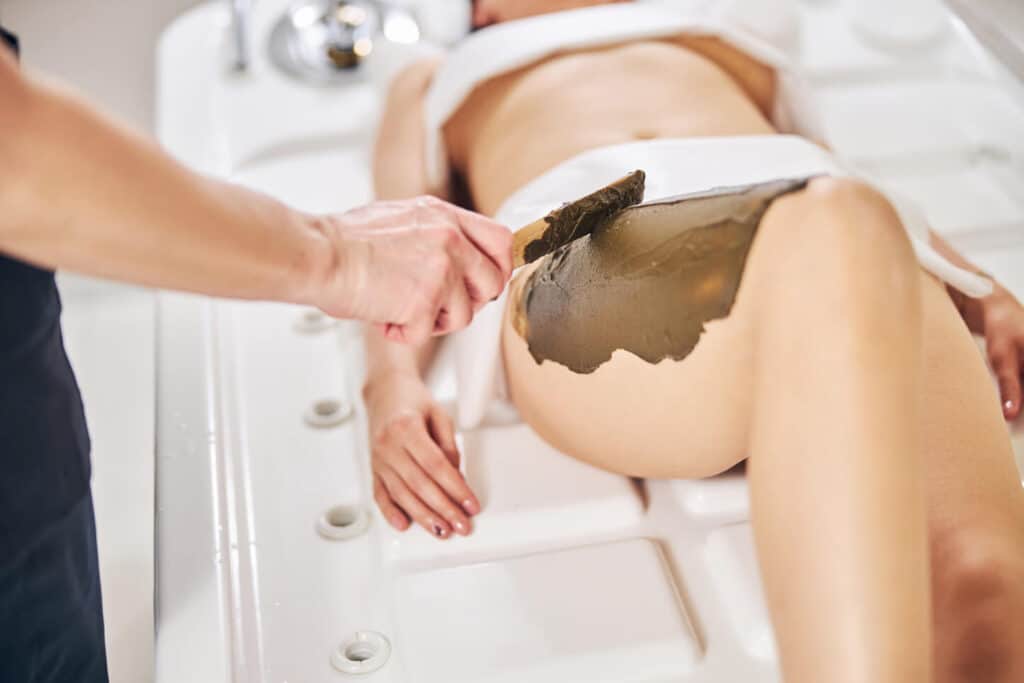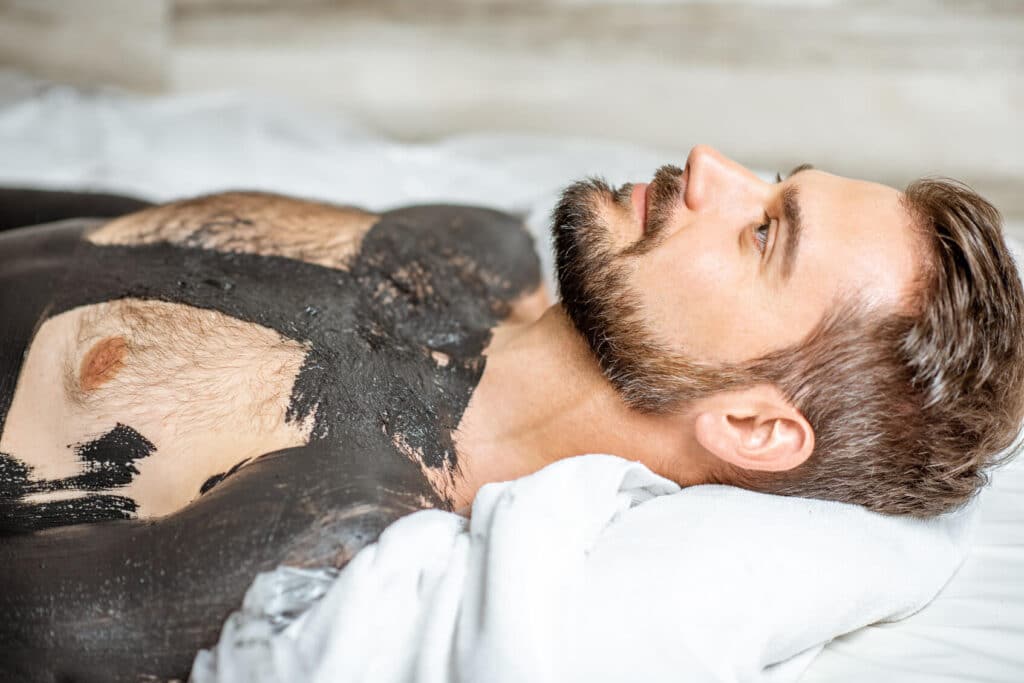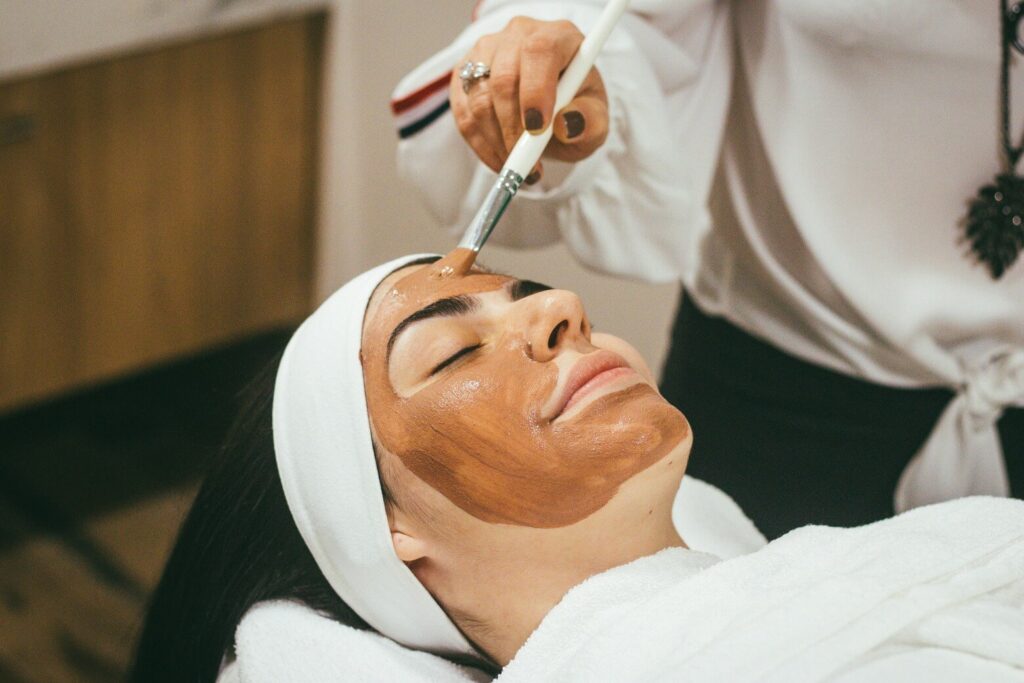The therapeutic benefits of mud have been cherished for centuries, and today, the mud spa stands out as a place where ancient wisdom meets contemporary wellness.
In this guide, we’ll go through everything you need to know about the mudding spa treatment – from the types of mud used to the usual mud spa process, and what you should look for in the perfect mud spa.
So grab a robe, and step into your slippers. It’s about to get dirty!

What Is A Mud Spa?
Also known as a mudding spa, a mud spa is like any other kind of spa, but there’s a special focus on the use of mud. By combining regular spa treatments, like massages, guests get the ultimate relaxation experience while taking care of their skin.
Mud Baths Vs. Mud Spas
There’s often confusion between mud baths and mud spas. Here’s a quick breakdown of the key differences:
- Mud Bath: Mud baths are a nature-centric immersion in outdoor settings like hot springs or volcanic regions, inviting individuals to connect with the Earth’s elements. Participants submerge themselves in natural mud pools, often experiencing historical or cultural traditions associated with the location. These experiences emphasize the raw, unfiltered benefits of mud in its natural habitat, creating a unique and often spiritually enriching encounter with the environment.
- Mud Spa: A mud spa provides a curated and controlled wellness experience within purpose-built facilities. The setting is typically indoors, offering a comfortable and climate-controlled environment. Mud is professionally applied, often accompanied by a variety of additional spa treatments such as massages, facials, or hydrotherapy. Mud spas blend traditional practices with modern innovations, allowing individuals to reap the benefits of mud while indulging in a comprehensive and luxurious spa experience.
The choice between a mud bath and a mud spa ultimately depends on personal preferences, with mud baths appealing to those seeking a raw connection to nature, and mud spas catering to those desiring a more diverse and refined wellness journey.

Why Mud?
The paradox of cleansing yourself by getting dirty might confuse some people. But there are some really good reasons why this substance is a great thing for your skin.
- Minerals: Mud holds lots of natural minerals like silica, sulfur, and magnesium. These elements are great for taking care of your skin.
- Rejuvenation: The combination of minerals also helps to exfoliate the skin, shedding dead cells and leaving you with a natural glow. It also stimulates blood circulation, which helps you look younger.
- Detoxification: Because it’s so absorbent, mud is good at pulling impurities out of your skin. As it dries, it sticks to toxins and pollutants, leaving your skin clean and clear.
- Muscle & Joint Relief: Mud’s natural warmth and mineral content makes it great for soothing tired muscles and easing joint pain.
- Stress reduction: It might sound weird, but covering yourself in mud can help you relax, too. The physical sensation helps many people feel protected and safe, helping to reduce stress.
So, now that you know why it’s great, let’s look at the types of mud you may find at a mud spa.

Types of Mud Used In A Mudding Spa Treatment
Various types of mud, each sourced from unique geological locations, offer distinct therapeutic benefits. Here’s a guide to different types of mud and their best-known attributes
Volcanic Mud
Best For: Exfoliation and detoxification.
Rich in minerals like silica, sulfur, and magnesium, volcanic mud is known for its abrasive texture, making it effective for exfoliating the skin. It also aids in drawing out toxins.
Sulfur Mud
Best For: Acne-prone skin and joint/muscle pain relief.
Sulfur mud is renowned for its healing properties, making it suitable for addressing acne and promoting overall skin health. Additionally, it may provide relief from joint and muscle discomfort.
Dead Sea Mud
Best For: Psoriasis and skin conditions.
Rich in minerals such as magnesium, calcium, and potassium, Dead Sea mud is acclaimed for its potential benefits in treating skin conditions like psoriasis and promoting overall skin health.
Bentonite Clay
Best For: Absorbing toxins and clarifying the skin.
While it’s not technically mud, bentonite clay is often used in spa treatments. It has absorbent properties, making it effective for drawing out impurities, clarifying the skin, and addressing excess oil.
Rhassoul Clay
Best For: Gentle exfoliation and improving skin texture.
Rhassoul clay comes from Morocco and is high in silica, magnesium, and potassium. It provides a gentle exfoliation, improving skin texture and promoting a radiant complexion.
Kaolin Clay
Best For: All skin types, especially sensitive skin.
Also known as white clay, kaolin is mild and suitable for all skin types. It is often used for its ability to absorb excess oil, cleanse the skin, and improve circulation.
Moor Mud
Best For: Anti-inflammatory effects and joint/muscle relief.
Moor mud is extracted from peat bogs, and is rich in organic substances and minerals. It is known for its anti-inflammatory properties and is often used for joint and muscle pain relief.
Hot Spring Mud
Best For: Skin rejuvenation and relaxation.
Mud sourced from natural hot springs is typically mineral-rich, containing elements like sulfur, calcium, and magnesium. It is known for promoting skin health and inducing relaxation.
French Green Clay
Best For: Absorbing excess oil and revitalizing the skin.
French green clay is known for its absorbent properties. It helps to absorb excess oil, cleanse the skin, and revitalize the complexion.
Icelandic Blue Lagoon Mud
Best For: Skin rejuvenation and nourishment.
Blue Lagoon mud comes from Iceland and is celebrated for its skin-rejuvenating properties. It is often used for its nourishing effects on the skin.
Now that we’ve identified the unique qualities of various mud types and their therapeutic benefits, let’s take a look at the transformative world of mud spa treatments.

What To Expect During A Mud Spa Treatment
Experiencing a mud spa treatment can be a unique and rejuvenating adventure. While specific details may vary depending on the spa and the type of treatment you choose, here’s a general overview of what you can expect from a mud spa treatment:
Consultation
Before the treatment begins, you may have a consultation with a spa professional. They may ask some questions about your health, skin type, and any specific concerns or preferences you have.
Choosing The Mud
The spa professional will guide you in choosing the type of mud that best suits your needs. Because different muds offer different benefits, you may end up using more than one type of mud for your treatment.
Prep
You’ll be provided with a private space to change into a bathing suit or disposable undergarments. Some treatments may require you to shower beforehand to ensure your skin is clean.
Application
The mud is then applied to your body, either by a spa therapist or by yourself, depending on the treatment. It usually covers areas such as the face, neck, shoulders, and limbs.
Relaxation Time
Once the mud is applied, you’ll get some time to relax. This could involve lying down on a treatment table, sitting in a mud bath, or even enjoying the outdoors if the spa has natural surroundings.
Drying Process
As the mud dries, you may experience a warming sensation. It’s a core part of the treatment, allowing the minerals in the mud to work on your skin.
Rinsing Off
After the mud has dried, you’ll be directed to rinse it off. This can be done in a shower, a nearby pool, or, in some cases, a natural body of water.
Additional Treatments
Like we said, this is what you could usually expect from a mud spa treatment. But some mud spa experiences may include additional treatments.
Massages
Massage may be performed after the initial application of mud, especially if the mud is used for its skin-detoxifying and muscle-relaxing properties. It helps to further distribute the mud evenly across the skin, enhancing blood circulation, and promoting relaxation.
Facial Treatments
Facial treatments, such as masks or moisturizers, may be applied either simultaneously with the body mud or after its removal. These treatments focus on the delicate skin of the face, providing hydration, cleansing, and addressing specific skincare concerns.
Wraps/Packs
Wraps or packs, often utilizing ingredients like seaweed or herbal blends, may be applied after the mud or in conjunction with other treatments. These treatments can enhance detoxification, promote skin hydration, and contribute to the overall relaxation of the body.
Sounds great, doesn’t it? It is! But before you book a trip to a mud spa, you should make sure you choose the right one.

What To Look For In A Mud Spa
Picking a mud spa isn’t complicated, and you could probably go to any mud spa and enjoy the treatment. But if you want one that fits you, here are some things to look out for.
- Reputation & Reviews: Look for reviews and testimonials from previous visitors. Online platforms, spa websites, or travel forums can provide insights into the spa’s reputation.
- Qualifications: Check if the spa employs licensed and certified professionals. Qualified therapists contribute to safe and effective treatment.
- Mud Quality: Inquire about the source of the mud used in treatments. Natural, mineral-rich mud from reputable sources enhances the therapeutic benefits of the spa experience.
- Types of Treatments: A good mud spa should offer a variety of mud-based treatments and complementary services. This allows you to choose treatments that align with your specific wellness goals.
- Location: Mudding spa treatment is all about relaxation and rejuvenation. If the spa is located in a natural setting, such as near hot springs or in picturesque landscapes, it can enhance the overall experience.
- Cost Understand the pricing structure and ensure there are no hidden fees. Consider the value you receive in terms of treatments, amenities, and the overall spa experience.
- Average Price: The average cost at a mud treatment spa depends entirely on the spa you visit. But a basic mud treatment can start at around $50, with luxury treatments costing $1000 and up.
How Air Doctor Can Help
Did you know if you need to find a doctor abroad you can use the Air Doctor app to find one – anywhere, anytime?
Air Doctor gives you:
- Access to over 20,000 multi-lingual doctors worldwide
- Choice of clinic, at-home (hotel), and video visits
- Local, valid prescriptions through our cross-border services
- Quality medical care, including urgent visits
- 24/7 multi-lingual customer support
- Video consultation services in up to 21 languages
- Partnered with leading insurance providers
Download the app, just in case.












